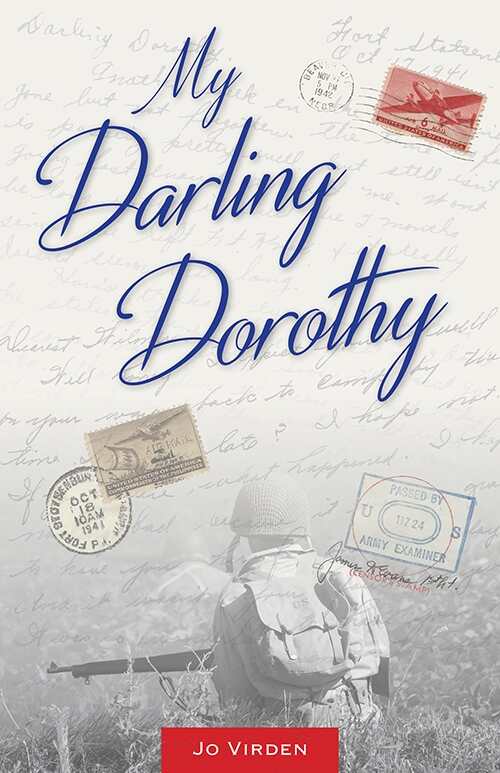My Darling Dorothy
Virden captures the ethos of the time perfectly, contrasting the rigidity of conservative social norms with spirited rebellion on the part of the children.
The bundle of old letters, carefully tied with a blue ribbon, that Jo Virden discovered among some dusty boxes in her mother’s basement held a mystery: Who were the young soldiers whose letters her mother had saved all these years, and what happened to them? Based on authentic correspondence, Virden’s My Darling Dorothy is the powerful evocation of a pivotal time in world history, a tribute to the American soldiers who served in World War II and the women who loved them.
Virden traces the life of young Dorothy Ayers as she assumes the care of her family after her mother’s death. Dorothy’s mother had been the only one to nurture and encourage her dream of leaving Nebraska after high school to see the world. Virden skillfully illuminates both how grief threatened to engulf the spirited girl, and how inner strength helped her to stand firm in her pursuit of a better life.
Virden paints a vivid, poignant picture of daily life on the windblown plains of Nebraska as war raged in Europe, dragging the United States, still reeling from the Great Depression, into the conflict. Food and winter fuel were scarce, and not even backbreaking work could guarantee safety from the next disaster. Children dreamed of a day when they would escape their hardscrabble existence for adventures in far-flung places, even as hopelessness, borne on heavy, gray clouds, seeped into their souls.
When the United States entered World War II, the two young men who captured Dorothy’s heart became soldiers. Their letters to her are in turn funny, frightening, heartbreaking, and filled with love and longing. Virden captures the ethos of the time perfectly, contrasting the rigidity of conservative social norms that mandated the father’s rule over the household with spirited, though often covert, rebellion on the part of the children.
The book also shows how, at a time when women’s role in the workplace was restricted, Dorothy’s ambition was not well received by her father, nor by potential suitors. Also portrayed to perfection are the angst, confusion, bravado, and passion of young love, made all the more intense by the horrors of war and the knowledge that a life could be snuffed out in a second.
The book is beautifully designed, from the attractive front cover to the interior design and layout. The authentic postcards, stamps, and letters used to illustrate the text lend both authenticity and an appropriately nostalgic tone.
The text is essentially flawless in grammar, word usage, punctuation, and syntax, with the exception of the letters, which were purposely left as they had been written, and the dialogue, which is authentic to the voice of each character. The pacing is exactly as needed to keep the story flowing smoothly, and Virden’s insightful skill with character development makes both the major and the minor characters shine.
My Darling Dorothy is a sensitive and captivating tale that illuminates how, beyond the danger, despair, and depravity of war, there still remains a cherished place within each human being where dreams remain “safe and possible and untouched.”
Reviewed by
Kristine Morris
Disclosure: This article is not an endorsement, but a review. The publisher of this book provided free copies of the book and paid a small fee to have their book reviewed by a professional reviewer. Foreword Reviews and Clarion Reviews make no guarantee that the publisher will receive a positive review. Foreword Magazine, Inc. is disclosing this in accordance with the Federal Trade Commission’s 16 CFR, Part 255.

